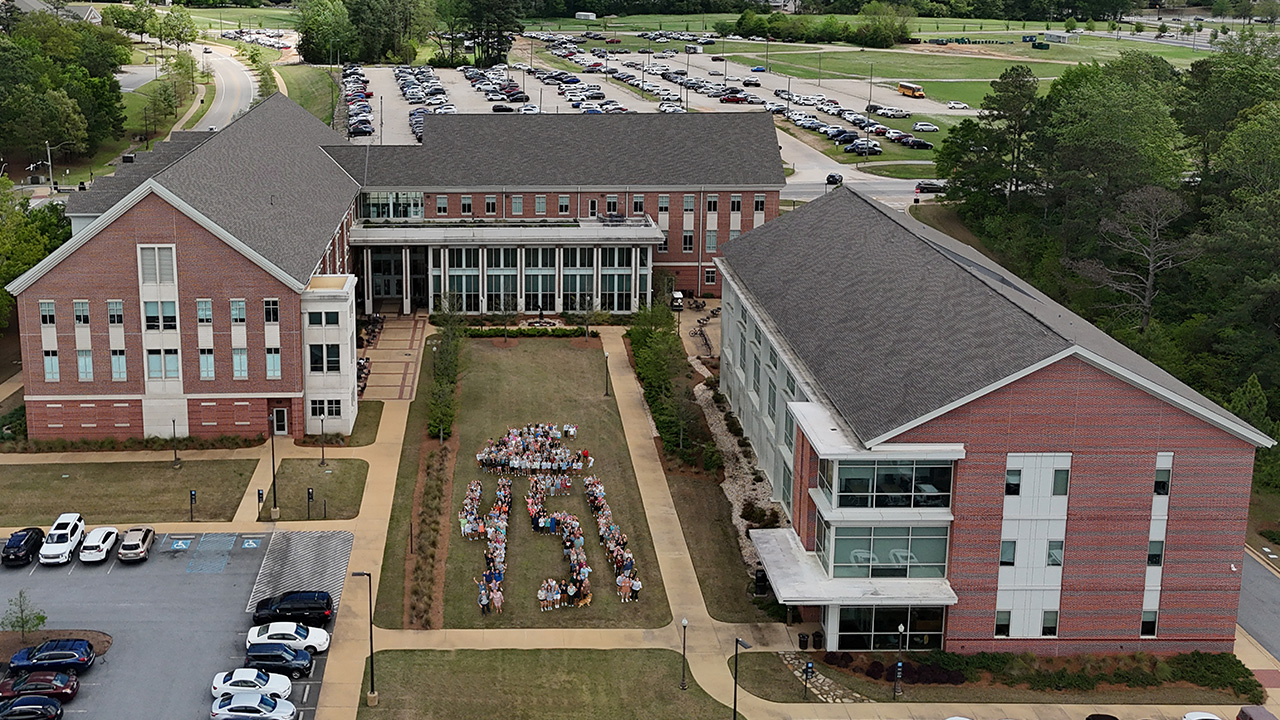content body

<a href="https://flic.kr/p/2pZuGmW">In 1980, the Glomerata included a story about university's newest academic program.</a>
In 1981, 24 Auburn University students, many recruited from the home economics program, made up the first graduating class from what was the School of Nursing. Today, the College of Nursing has grown to 600 students, with 40 faculty members, more than half a dozen degree and certificate programs and 37 outreach programs.
As the college celebrates its 45th anniversary, graduates from those early years can remember the program’s humble beginnings. Despite being in the first graduating class, alumnae Susan Holmes and Betsy Bean recall being well-prepared to enter the field, with many of the new graduates going directly into critical care units.
“My very first job was in the intensive care nursery. Nowadays, I don’t think they hire you right out of school for that, but in 1981 they did, and I was so prepared to do that job,” Bean said. “All I remember is how competent our nursing instructors were and how much one-on-one attention we got. I felt like I was so taken care of, and they wanted us to succeed.”
Holmes, who is not only an alumna but also a former clinical instructor at Auburn, knows the college’s current facilities dwarf what she and her classmates had when the program was housed in Miller Hall.
“There is no comparison,” she said. “We didn’t even have a clinical skills lab — we had one classroom, some offices and that was about it. When I started, we practiced bed baths on each other. I think it’s great to have the new building, it’s just a beautiful facility.”
At 89,000 square feet, the new facility is home to classrooms, offices, study and meeting spaces and top-of-the-line simulation (sim) labs. Students receive instruction in patient care through the use of lifelike manikins designed to mimic real health care situations.
“We had none of that,” Holmes said. “We went to the hospital and had hands-on experience with live people. It may be a stressful environment when you are in a sim lab, but you’re not going to kill that patient, so it gives them a little bit more practice in critical thinking and making judgement calls that we didn’t have.”
In addition to the sim lab, current students have more experience in health care settings than the first graduating class. There are mentorships and a growing apprenticeship program, and every student does a preceptorship, a six- to eight-week clinical practicum completed right before graduation.
“Preceptorship was not as big a deal as it is now at all,” Bean said. “In fact, I don’t even remember doing one. We took buses to Columbus Medical Center for our clinicals. At six in the morning, they’d come by and pick me up from my dorm.”
Bean also knows technology has drastically changed the way nurses learn and work. She remembers receiving information about patients’ medications the night before seeing them during a clinical.
“There was no internet in 1981, so we had to look everything up in a physician’s desk reference and write the names of drugs on little 3x5 index cards,” she said. “And our charting was done by pen and paper. So, when you worked the day shift you wrote in blue ink; on evening shift you wrote in green ink and on night shift, you wrote in red ink.”
Even though it lacked the technology and facilities it has now, Auburn’s nursing program produced well-prepared graduates in 1981 just as it does today. As a practicing nurse practitioner in the Auburn-Opelika area, Holmes shares a bond with fellow alumni no matter what year they graduated, and she’s always happy to run into them in the community.
“I see people from Auburn all the time, and I’m still very proud to have graduated from Auburn,” she said. “I’ll tell anybody, an Auburn nurse has always been one of the most prized possessions a health care facility has.”





